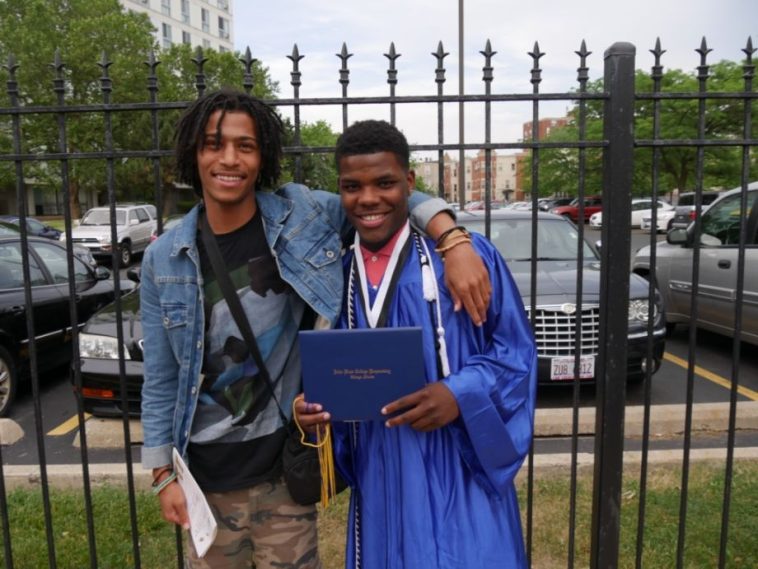In the Englewood district of Chicago’s south side, a community heavily touched by violence, the toll taken on the local young population is pervasive. With almost 100 people succumbing to gun-related incidents in the previous year, the grim reality is a daily burden for many, particularly the area’s youth. To the point where a young 17-year-old resident, A.M., expressed his constant state of vigilance and fear whenever he and his friends took a casual stroll. The burden has become such a mainstay in the life of another 17-year-old resident, D.B., that the sound of gunshots has a numbing effect instead of invoking a sense of panic.
Observing these reactions of desensitization and increased alertness, hallmark symptoms of chronic stress, adults at the local high school decided it was time for intervention. They turned to a youth program known as Choose to Change, which delivered encouraging results in de-escalating violent situations and reducing the reciprocal effects of violence. The program, interestingly, incorporated a motif from the world of professional poker in its effort to diffuse tension and mitigate violence.
The population targeted by Choose to Change typically consists of struggling youth, encompassing those who have had interactions with the law, gaps in school attendance, possible links to gang activities, or are under juvenile probation. The program assigns each participating student with a mentor and mandates weekly group therapy sessions. Critical thinking, specific to traumatic experiences, is fostered through cognitive behavioral therapy (CBT).
Chris Sutton, the director of the program, emphasizes using a different lens for viewing past traumatic instances. Rather than seeing themselves as victims, Sutton encourages the youth to view themselves as survivors. The aim is to value their ‘wins’ – moments they survived or overcame – which they traditionally wouldn’t credit themselves for.
Promising evidence of the program’s long-term effectiveness was furnished in a research study released last autumn by the University of Chicago Crime Lab. Post hoc analysis showed that teenage participants were almost 40% less likely to be arrested for a violent crime in comparison with those who did not undergo the program. This outcome was observed for up to two years following program completion.
The successful implementation of this program adds to a plethora of evidence suggesting the efficacy of this specialized form of therapy in mitigating violence. CBT-based programs on the east coast, including Roca in Massachusetts, have echoed similar outcomes. No new arrests were made for program completers with criminal backgrounds who persisted with the program for more than two years.
Director of the University of Chicago Crime Lab, Jens Ludwig, provides an alternate perspective on violent crime causation, challenging the traditional points of view that violence is either a product of moral degradation or economic desperation. Ludwig suggests the prevailing wisdom inherent in both theories operates on the same fundamental principle: offenders typically weigh the risks against the benefits before they act.
However, Ludwig sees the reality differently, arguing that many violent crimes are more impulsive than reasoned. Much like being on tilt in poker, where emotions override logic, Ludwig believes gun violence is much the same, where unchecked emotions lead to regrettable outcomes. With this understanding, potential violence-mediated solutions shift significantly.
Ludwig acknowledges that these cognitive-focused interventions are not a magic bullet or a standalone replacement for gun control. Rather, they can progressively push individuals towards non-violent paths while a comprehensive solution for firearm regulations is still in progress. ‘How do we cultivate a society where people are less inclined to pick up guns against each other’, Ludwig asks, in a nation with an estimated 400 million guns.
On another perspective, managing emotions can be especially challenging for youths, further exacerbated under conditions of trauma. Young individuals exposed to persistent violence are statistically more likely to perpetrate violence later in life. Dan Flannery, a violence prevention researcher at Case Western Reserve University, underlines the emotional, behavioral impacts and worldview shifts in children frequently exposed to violent scenarios.
Through altering the neural pathway of responses, cognitive behavioral therapy brings about the ability to reject retaliation or aggression and opt for peaceful resolution during disputes. However, implementing this therapy requires substantial resources. It demands a tailored approach that is intimately aware of the nuances in every implementational environment since a one-size-fits-all solution is unrealistic.
Chicago’s Choose to Change, launched a decade ago, has expanded over the years. More than 4,000 students have participated in the program and officials from Chicago Public Schools are hopeful about its progress. Jadine Chou, the district’s former chief of safety and security, states that the school’s duty extends beyond its walls and it’s imperative to consider the broader picture.
In fact, students of Englewood, who completed the program last year, delineated their progress vividly. Whereas before they were regularly participating in violence, the program has allowed them to express and deal with their internal struggles resulting in better school engagement. Their growth was further demonstrated when they were recognised nationally with third place in a youth competition for creating an anti-violence program; a testament to how far they’ve come.


